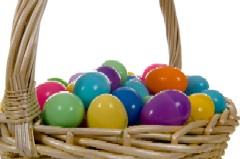 Easter would not be complete without brightly colored Easter eggs, but have you ever wondered where this tradition began? Who thought of painting the shells of eggs such bright, even ornate colors? When did children begin dyeing eggs as part of their Easter holiday traditions?
Easter would not be complete without brightly colored Easter eggs, but have you ever wondered where this tradition began? Who thought of painting the shells of eggs such bright, even ornate colors? When did children begin dyeing eggs as part of their Easter holiday traditions?
While Easter is known as a Christian holiday, where believers celebrate Jesus Christ’s resurrection and the new life they are offered, the tradition of the Easter egg goes farther back in history, before the life of Christ. Eggs have always been a symbol of both fertility and new life. These themes are common in spring holidays around the globe and throughout history. The ancient Egyptians were known to use eggs in their spring festivals, many of which fell around the time of today’s Easter holiday. The same is true of Persians and Romans.
Easter Eggs have a measure of religious history as well. The Catholic celebration of Lent in medieval times forbade the church members from eating eggs. As food was scarce in this century, the eggs that were laid during these weeks of fasting were not wasted. Rather than tossing them out, many were preserved, often through boiling. Easter was the time to break the fast of Lent, and the preserved eggs were an important part of the meal. Even children enjoyed receiving eggs at Easter as gifts, since they had been forbidden for so many weeks. Servants were also given an egg at the Easter dinner, a rare treat for those in the medieval serving class.
Read the rest of this entry »
 Americans have a long tradition of celebrating St. Patrick’s Day each March 17th with plenty of green beer and pinches to go around. But where did these traditions come from? Did our Irish ancestors bring them to America when they immigrated? Or are these customs purely Americanized visions of an Irish holiday? Surprisingly, the latter is true. Most St. Patrick’s Day customs that we are familiar with today have no roots in Ireland at all.
Americans have a long tradition of celebrating St. Patrick’s Day each March 17th with plenty of green beer and pinches to go around. But where did these traditions come from? Did our Irish ancestors bring them to America when they immigrated? Or are these customs purely Americanized visions of an Irish holiday? Surprisingly, the latter is true. Most St. Patrick’s Day customs that we are familiar with today have no roots in Ireland at all. Easter would not be complete without brightly colored Easter eggs, but have you ever wondered where this tradition began? Who thought of painting the shells of eggs such bright, even ornate colors? When did children begin dyeing eggs as part of their Easter holiday traditions?
Easter would not be complete without brightly colored Easter eggs, but have you ever wondered where this tradition began? Who thought of painting the shells of eggs such bright, even ornate colors? When did children begin dyeing eggs as part of their Easter holiday traditions?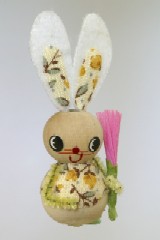 Have you ever wondered where the Easter Bunny came from? Whose idea was it to have a pink, fuzzy rabbit hide eggs around the yard for children to find anyway? Ask any elementary student and you will quickly learn that rabbits are mammals, and mammals do not lay eggs! Is there a historical reason behind this quirky Easter tradition?
Have you ever wondered where the Easter Bunny came from? Whose idea was it to have a pink, fuzzy rabbit hide eggs around the yard for children to find anyway? Ask any elementary student and you will quickly learn that rabbits are mammals, and mammals do not lay eggs! Is there a historical reason behind this quirky Easter tradition?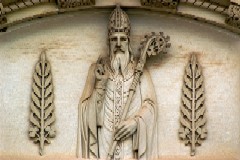 Born in Scotland, at Kilpatrick, Saint Patrick is the patron saint of Ireland. His exact birth date is unknown. However, it is believed that he was born sometime around the year 385 AD and died around the year 460 AD.
Born in Scotland, at Kilpatrick, Saint Patrick is the patron saint of Ireland. His exact birth date is unknown. However, it is believed that he was born sometime around the year 385 AD and died around the year 460 AD.  On February 14th in many countries throughout the world, men and women, friends and lovers, spouses and secret admirers will give one another cards, flowers, chocolates, and other gifts in honor of Saint Valentine – a man with a considerably murky past. Who exactly was this Saint Valentine and how did Valentine’s Day come into being?
On February 14th in many countries throughout the world, men and women, friends and lovers, spouses and secret admirers will give one another cards, flowers, chocolates, and other gifts in honor of Saint Valentine – a man with a considerably murky past. Who exactly was this Saint Valentine and how did Valentine’s Day come into being? 1. It seems that no one really seems to know who wrote “Twas the Night Before Christmas”
1. It seems that no one really seems to know who wrote “Twas the Night Before Christmas” Have you ever wondered about holiday spices? How are they important? And what are they used for? Can we live without them? Not if you love pumpkin pie, you can’t!
Have you ever wondered about holiday spices? How are they important? And what are they used for? Can we live without them? Not if you love pumpkin pie, you can’t! Christmas trees have simply become a part of our holiday celebrations, but I was surprised to learn just how many superstitions are connected with the trees. I don’t think that I will take them as much for granted as I once did. There is a lot more to that decorated tree than meets the eye!
Christmas trees have simply become a part of our holiday celebrations, but I was surprised to learn just how many superstitions are connected with the trees. I don’t think that I will take them as much for granted as I once did. There is a lot more to that decorated tree than meets the eye! The thought of mistletoe has lodged itself in my brain and having some spare time this afternoon, I decided to see what I could find out about the tradition of kissing beneath a few sprigs.
The thought of mistletoe has lodged itself in my brain and having some spare time this afternoon, I decided to see what I could find out about the tradition of kissing beneath a few sprigs.  The poinsettia is a beautiful red flower that is given most around the holidays, especially Christmas. The poinsettia has a long history, but one of the most interesting points of history is how the poinsettia made its way to America finding its first home in Greenville, South Carolina.
The poinsettia is a beautiful red flower that is given most around the holidays, especially Christmas. The poinsettia has a long history, but one of the most interesting points of history is how the poinsettia made its way to America finding its first home in Greenville, South Carolina.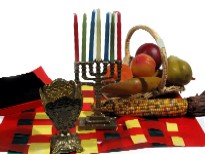 All holidays were invented at one time or another– Kwanzaa is probably the newest. Kwanzaa was born during the turbulent Sixties, in a time when Black Americans were demanding -and finally receiving- their civil rights. 1966 was a year of mighty changes; people who marched, attended sit-ins and generally raised a ruckus actually did change the world.
All holidays were invented at one time or another– Kwanzaa is probably the newest. Kwanzaa was born during the turbulent Sixties, in a time when Black Americans were demanding -and finally receiving- their civil rights. 1966 was a year of mighty changes; people who marched, attended sit-ins and generally raised a ruckus actually did change the world. Halloween and cats go hand in hand and you may be surprised to know a few facts about cats. Beware when trick or treating; you never know where a cat may be lurking!
Halloween and cats go hand in hand and you may be surprised to know a few facts about cats. Beware when trick or treating; you never know where a cat may be lurking!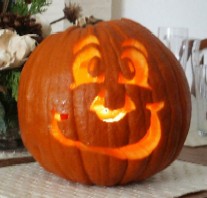 A brightly lit pumpkin with a ghastly glowing face sits on the porch. It is one of the most well recognized Halloween traditions. However, do you know where this tradition originated?
A brightly lit pumpkin with a ghastly glowing face sits on the porch. It is one of the most well recognized Halloween traditions. However, do you know where this tradition originated? White, furry bunnies are a historic symbol of Easter. People love them – except in Australia. It is hard to think of these adorable animals as unwanted but Australians learn quite early about the threat of rabbits to wildlife and farms. Rabbits are not native to Australia and became a major pest here when they were introduced in 1859, because they destroy the pasture and habitat of native wildlife and denuding native plants. Scientists tried to get rid of these feral creatures by introducing viruses but so far nothing has really worked. In some states even keeping rabbits as pets is illegal.
White, furry bunnies are a historic symbol of Easter. People love them – except in Australia. It is hard to think of these adorable animals as unwanted but Australians learn quite early about the threat of rabbits to wildlife and farms. Rabbits are not native to Australia and became a major pest here when they were introduced in 1859, because they destroy the pasture and habitat of native wildlife and denuding native plants. Scientists tried to get rid of these feral creatures by introducing viruses but so far nothing has really worked. In some states even keeping rabbits as pets is illegal. To our ancestors, the arrival of spring was always a reason to celebrate. After the barren winter months living on stored foods, spring brought the promise of fresh game and new life.
To our ancestors, the arrival of spring was always a reason to celebrate. After the barren winter months living on stored foods, spring brought the promise of fresh game and new life.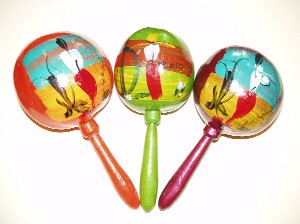 The Mexican people have a long history of fighting for their independence and their land. Battles with the Americans, the Spaniards, and the French people are scattered throughout their colorful history.
The Mexican people have a long history of fighting for their independence and their land. Battles with the Americans, the Spaniards, and the French people are scattered throughout their colorful history.